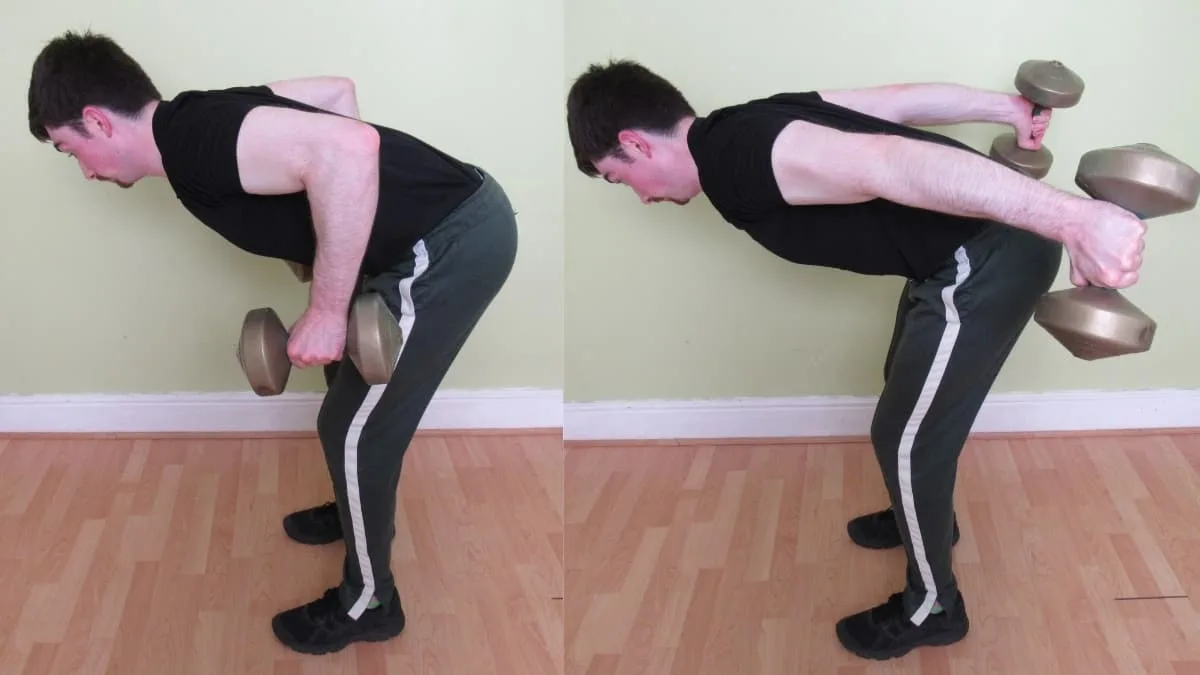In addition to elbow extension, the other triceps brachii muscle action is shoulder extension, which is to say moving your shoulders toward and then behind your torso.
But since only the long head of the triceps crosses the shoulder joint, it’s the only head that’s able to perform shoulder extension.
This fact is significant from a hypertrophy perspective because the long head is (by far) the biggest muscle of the triceps, which means that when you perform a bent over tricep extension, the long head is actually doing most of the work because your shoulders are in extension.
So if you want to build triceps mass or simply make the backs of your arms more toned, bent over triceps extensions really are one of the most effective exercises that you can do.
Bent over tricep extension exercise details
- Main Muscles: Triceps
- Exercise Type: Strength
- Exercise Mechanics: Isolation
- Difficulty Level: Intermediate
- Equipment Needed: Dumbbells
How to do bent over tricep extensions
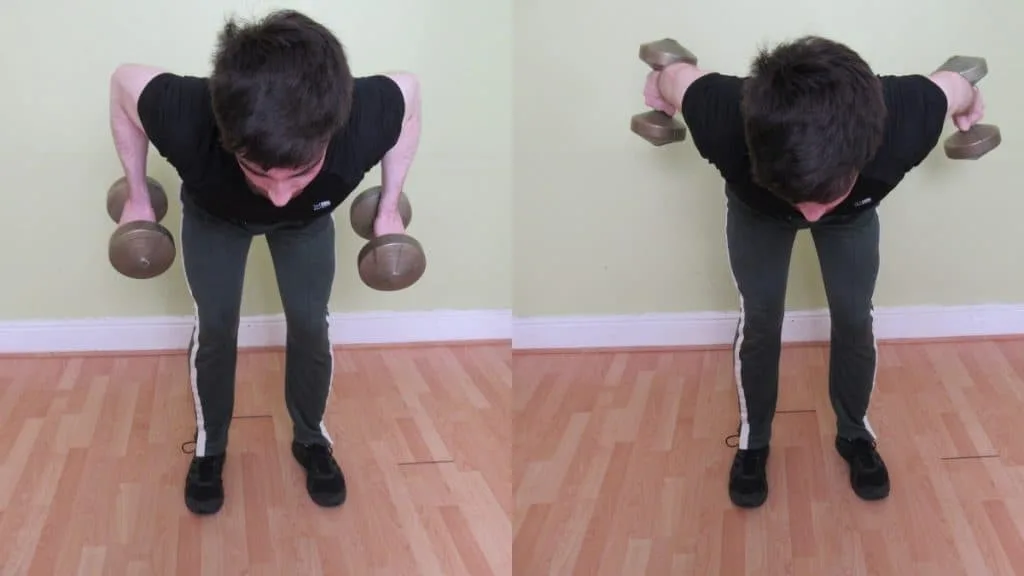
- Grab a pair of relatively light dumbbells with a neutral grip.
- Bend your knees and then bend over at your waist so that your torso is roughly parallel with the ground.
- Lift your shoulders up so that your elbows are higher than your back (as if you were doing a dumbbell row).
- While keeping your shoulders still, flex your triceps forcefully until your elbows reach full extension.
- Hold the peak contraction for a second.
- Lower the weights in a controlled manner. Stop just before your lower arms are perpendicular to the ground so that you can keep tension on your triceps.
- Perform 3-5 sets of 10-20 reps.
Bent over tricep extension variations
There’s more than one way to do a bent over triceps extension: You can do the exercise with a single dumbbell to really hone in on each of your triceps, or you can perform the movement on a bench to eliminate momentum.
Bent over triceps extension on a bench

Performing the bent over arm extension on a bench stabilizes your torso and legs and thus renders these two body parts incapable of generating momentum.
Eliminating body English is crucial for an exercise like the bent over tricep extension because when you’re using such light weights (which you should be for this exercise), it’s easy to rob your triceps of tension by swinging the weights up with your other muscles.
Bracing your torso against the backrest of the bench also means that you don’t need to put as much effort into stabilizing your core, which in turn means that you can put more effort into training your triceps.
Just be sure to use the proper shoulder position; you want to elevate your shoulders and elbows above your back so that your triceps are under direct tension. When you let your shoulders round forward, your triceps don’t have to contract as hard to lift the weight, which defeats the purpose of this already small-range-of-motion exercise.
Bent-over one-arm triceps extension
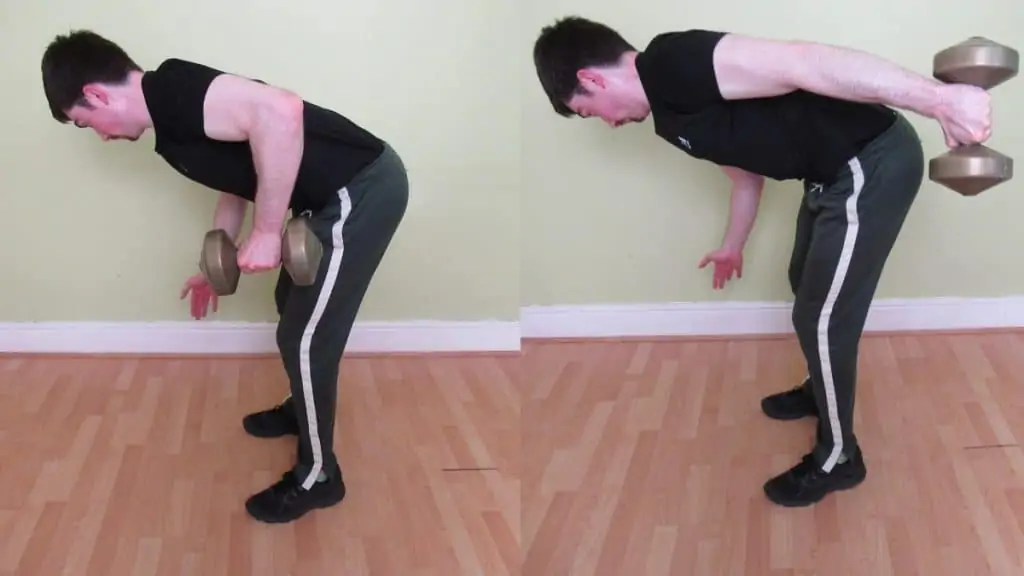
The bent over one arm triceps extension is an excellent exercise for developing symmetrical triceps because you’re training each arm separately.
When you work one arm at a time, your brain doesn’t have to split its focus over two limbs. This enhanced focus naturally means that you’ll be able to put more effort and intensity into working each of your triceps.
The only downside is that you might feel slightly off-balance when you’re doing the bent over single arm tricep extension because the weight will be trying to tip your body to one side. Of course, if you’re being sensible and using a light dumbbell for this exercise, then maintaining your balance likely won’t be an issue.
If staying balanced does become a problem, however, then you could always do front to back tricep extensions instead (another unilateral exercise, but one which requires less core stability).
Performing bent over tricep extensions one arm at a time also means that your sets will take longer to get through, which isn’t ideal if you only have a short amount of time to work out.
Considering that the two-arm bent over tricep extension already provides good triceps isolation, most people will suffer no losses in muscle activation and workout quality by sticking with that exercise.
Bent over tricep extension sets, reps, and training frequency
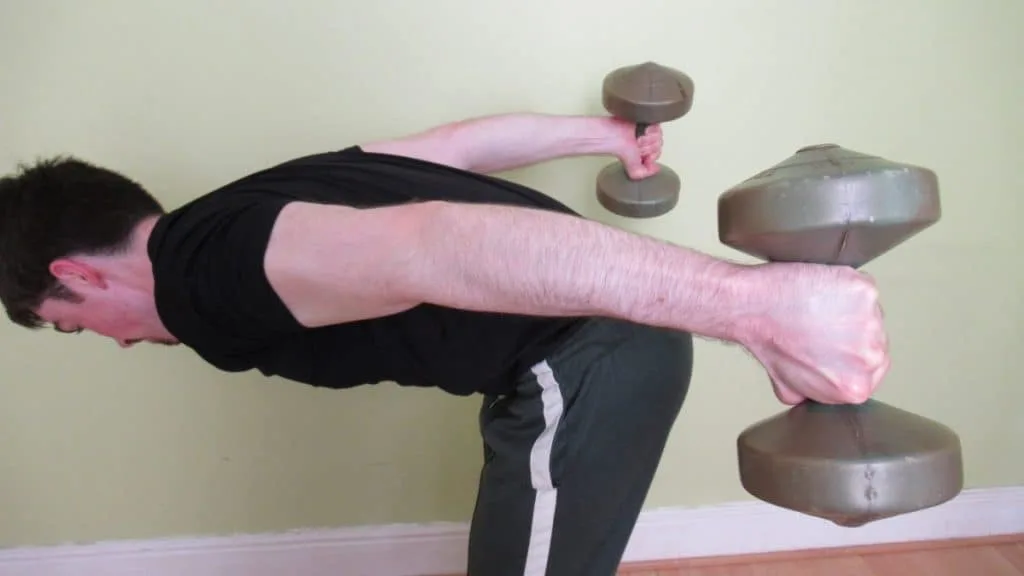
Since the bent over triceps extension has a very small range of motion, your best bet is to stick to sets of 10-20 reps so that your triceps get enough time under tension.
Don’t lift heavy weights for low reps on the bent over arm extension because this exercise trains your triceps when they’re in a very weak (i.e., highly contracted) position, which means that they can’t produce much force.
Perform 3-5 sets of 10-20 reps per session, aiming for the higher end of that rep range in most cases.
Do bent over tricep extensions 1-3 times per week.
Unlike other exercises, such as side leaning tricep extensions, the bent over tricep extension hardly creates any muscle damage because it doesn’t put your triceps under much of a stretch (and because you’re using light weights). Instead, the bent over extension exerts its peak tension when your triceps are in their opposite state—maximally contracted, not maximally stretched.
Since the movement causes less muscle damage, it’s easier to recover from. Since it’s easier to recover from, you can perform it more frequently.
Conclusion: Is the bent over arm extension a good exercise?
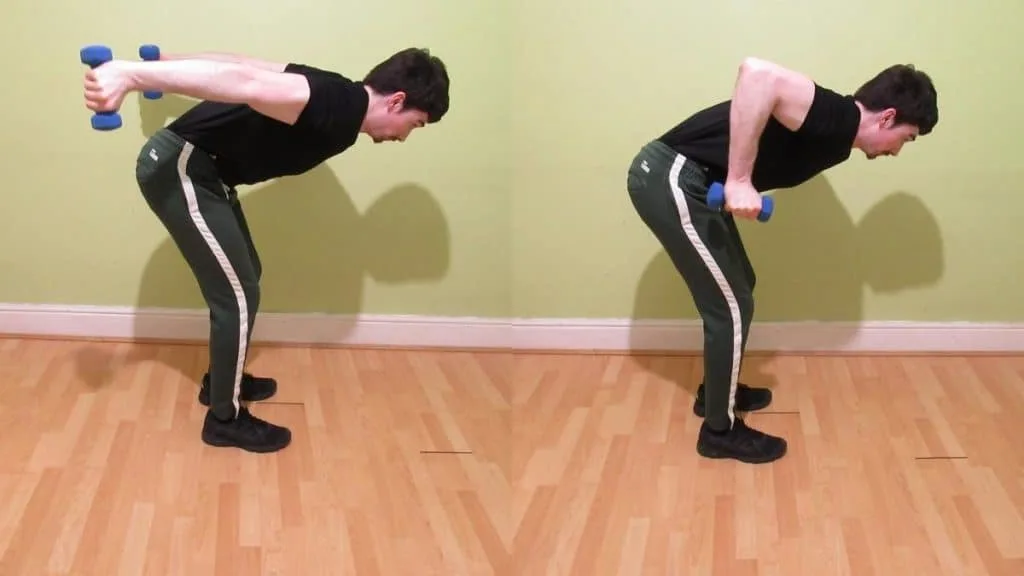
Many people avoid the bent over tricep extension because it doesn’t enable them to lift heavy weights.
What they don’t realize is that being muscles, your triceps only respond to tension. In other words, they can’t tell whether you’re lifting a 3 lb pink dumbbell or a heavy slab of iron.
Moreover, bent over arm extensions are virtually the only exercise that trains your triceps in their maximally contracted position.
So despite the fact that you’re lifting light weight, bent over tricep extensions are actually capable of stimulating hypertrophy because, in addition to your other exercises, they help to train your triceps from multiple angles, which recruits a broader range of muscle fibers.

